International Civil Agencies operate a number of satellites that are generating petabytes of synthetic aperture radar data to observe Earth densely in space and time. Since each agency designs their mission for specific objectives on unique timelines, coordination of the observation plans of the constellation is generally not easy. However, many of these data sets are available to the science applications community either shortly after acquisition or retrospectively. At the same time, computational technologies are undergoing a revolution in speed, interconnectivity, software maturity and openness, and interoperability. Therefore, coordination across the international community of SAR data providers with respect to efficient data acquisition, planning, science algorithm development, data product standards, framework for science data processing methodologies, data requests and processing resources should, in principle, be possible and would be highly advantageous to all parties. In recent years a number of commercial initiatives have been started aiming to provide services based on SAR images with high geometric and temporal resolution through constellations of small SAR satellites.
The second workshop on “International Coordination for Spaceborne Synthetic Aperture Radar” was held on 28-30 September 2022 at ESA/ESRIN in Frascati near Rome, Italy.
Objectives
The main purpose of this workshop is to bring together members of the community (stakeholders, users, researchers, …) to exchange information and discuss ways to facilitate coordination and collaboration to maximize the benefit of present and spaceborne future SAR systems. More particularly:
- Identify new trends in spaceborne SAR missions (e.g. bistatic, constellations of SAR’s, micro-SAR’s)
- Identify areas where coordination of data acquisitions can lead to improved science processing efficiency (i.e., common areas targeted for campaigns or disjoint areas where multiple coverage would be redundant)
- Explore ways to facilitate search of available data and requests for future data acquisition particularly for immediate need due to natural hazards (earthquakes, volcanic eruptions, floods, landslides, tsunamis, etc.) and for future field campaigns and utilization planning, and for other applications. Identify best practices and lessons learned related to SAR data acquisition coordination initiatives like the WMO Polar Space Task group SAR Coordination Working Group (a very successful SAR mission coordination body for polar regions) and Charter on Space and Major Disasters
- Identify areas where standards or common developments for data processing including data format standardization or Analysis Ready Data (ARD), product quality assurance (e.g. cross validation) and for data manipulation/fusion would be beneficial
- Identify computational efficiencies and challenges in achieving the mission objectives
- Identify challenges and opportunities in leveraging defense, civilian, commercial, and science systems to achieve users’ objectives (science and applications)
- Identify organizational challenges in achieving coordination among agencies
- Identify recommendations needed to acquire spatially and temporally dense SAR data sets
- Discuss interest and value in having common test sites, both distributed and with corner reflectors, to calibrate all SAR systems with common references
- Discuss how to maximize scientific/user exploitation of present and planned SAR missions (open data for scientific research, expanded ground receiving stations, …). Identify any regulatory challenges.
- Discuss the desirability of coordinating future missions and the role of the commercial sector to achieve future scientific and user objectives
- Develop a roadmap for addressing the above challenges and development areas.

